Vibration Anomaly Detection On Logistics Infrastructure
About the project
Solar Harvesting LIC Powered vibration monitoring solution makes uses of embedded AI models to classify vibration anomalies.
Project info
Story
Story
While all machinery and structures vibrate, monitoring excess vibration is key to early identification of asset issues. Vibration monitoring devices use accelerometers to measure changes in amplitude, frequency, and intensity of forces that damage rotating equipment. Studying vibration measurements allows teams to discover imbalance, looseness, misalignment, or bearing wear in equipment prior to failure.
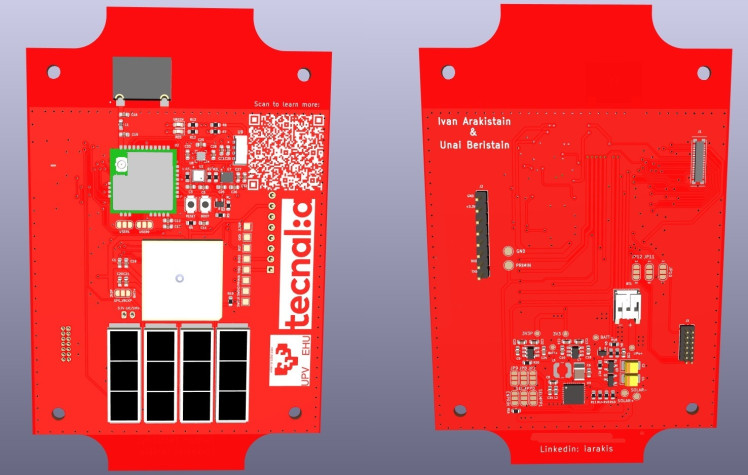
PCB top and bottom
Our use case has particular requirements, so we will focus on the following long term solar powered vibration monitoring PCB. As you can see, it uses 4 tiny solar cells which provide all the energy required by the device. Energy is stores in a Lithyum Ion Capacitor (LIC) which is a very durable energy storage solution. Even if it has not such an energy density as a LiPo battery, it endures x10 charge and discharge cycles.
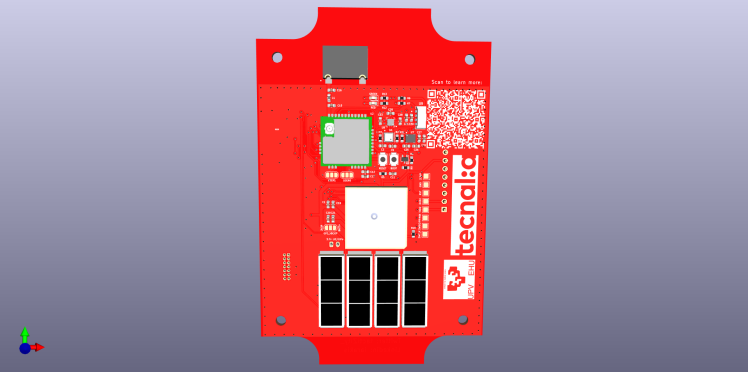
PCB top side
A transparent enclosure was selected to protect the PCB while keeping solar harvester still operational. Below we can see.
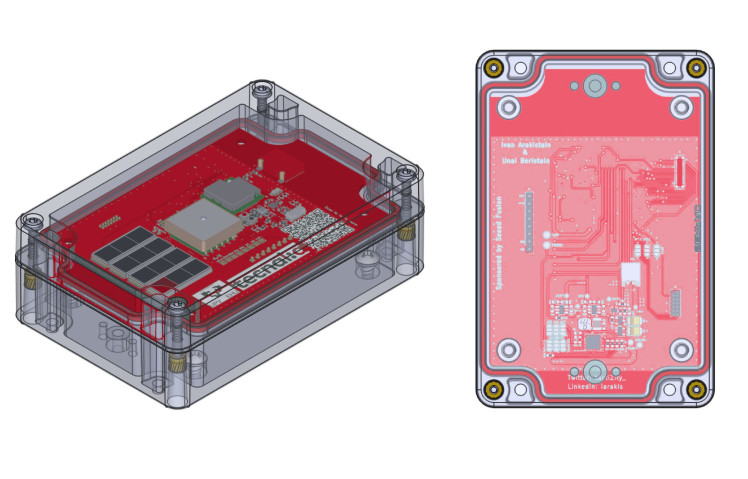
PCB in a transparent enclosure
But let´s have a closer look to energy consumption of the board next. We used a Power Profiler Kit II measurement tool from Nordic Devices.
Energy Consumption 🔋
Maintaining current consumption low is critical for our application, as it will be solar powered. Current draw in sleep mode is kept low under 12uA, while there are consumption spikes mainly when LoRa data transmission is performed, reaching up to 48mA instantaneous consumption.
In the next graph, deep sleep current consumption is shown at 11.68uA.
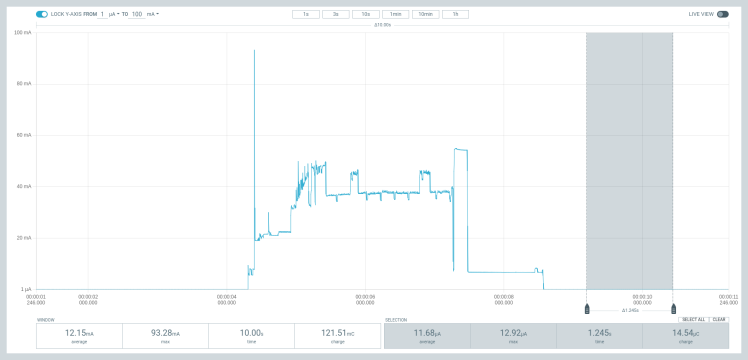
Current consumption in deep sleep mode is less than 12uA
Next, current consumption is measured during LoRa data transmission, reaching up to 48.09mA during a short period of time.
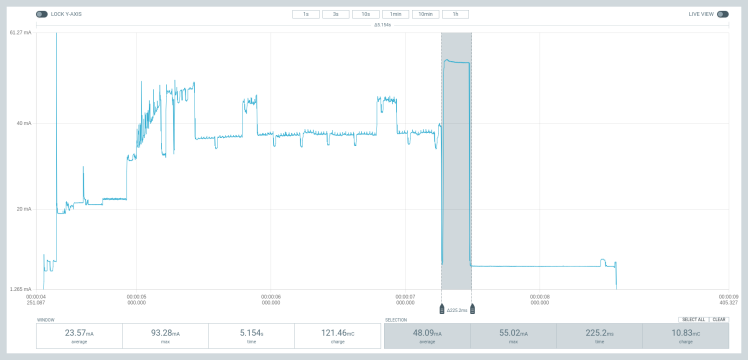
Current consumption for LoRa data transmission
Vibration monitoring 📳
IIS3DWB accelerometer from ST is a system-in-package featuring a 3-axis digital vibration sensor with low noise over an ultra-wide and flat frequency range. The wide bandwidth, low noise, very stable and repeatable sensitivity, together with the capability of operating over an extended temperature range (up to +105 °C), make the device particularly suitable for vibration monitoring in industrial applications.
Selected sampling frequency for the measurements was 1024Hz.
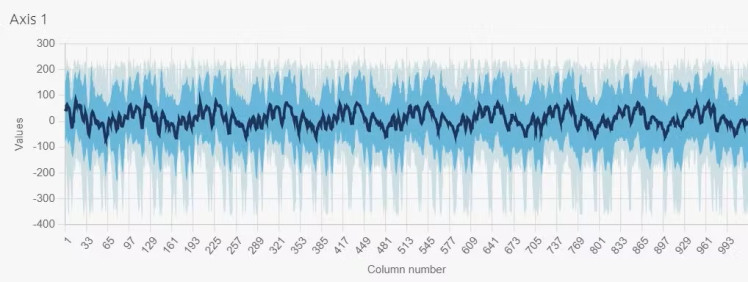
Readings obtained with IIS3DWB accelerometer Axis 1
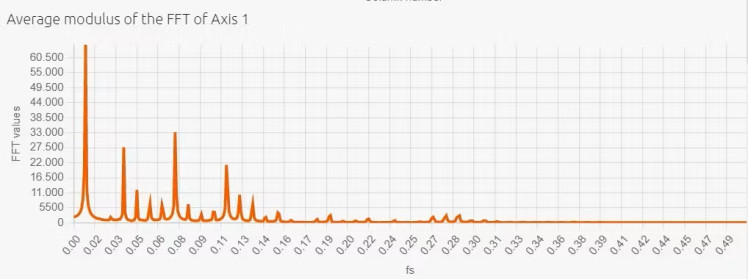
FFT of accelerometer Axis 1 signal
Embedded AI with TinyML 🧠
We were able to detect vibration anomalies... Please keep tunned, we are currently working on it. Will complete the post soon with all the details.
Applications 🎯
Vibration monitoring has a wide variety of applications in industry, construction, infrastructure maintenance etc. In our case, we are mainly interested in transport infrastructure such as sea conditions for cargo ships, roads (bridges, slopes...), and train railways.
For further academic projects on smart logistic infrastructure, please have a look to the proceedings of "26th IEEE International Conference on Intelligent Transportation Systems ITSC 2023" to be held on 24-28 September in Bilbao.































Leave your feedback...